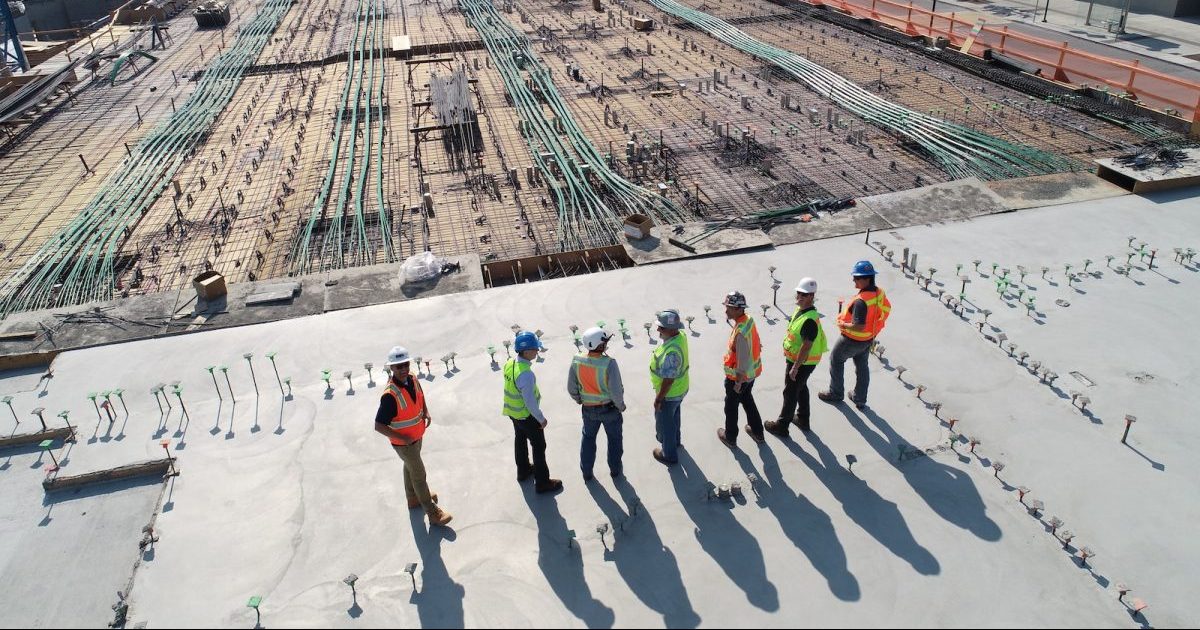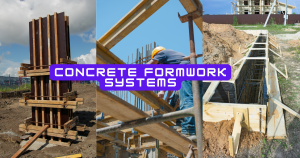Introduction
Imagine a construction project as a complex symphony, with numerous moving parts harmonizing to create a masterpiece. Amidst the whirlwind of architects, engineers, contractors, and suppliers, there is a group of individuals who hold a unique power—the stakeholders. Like influential characters in a grand production, stakeholders play a pivotal role in shaping the outcome of construction projects. Their involvement, engagement, and collaboration can either elevate the project to new heights or leave it languishing in disarray. In this article, we delve into the captivating world of stakeholders in construction projects, uncovering their significance, challenges, and strategies for success.
Defining the Key Players: Who are the Stakeholders?
Before we dive deeper, let’s shed light on what we mean by stakeholders in the context of construction projects. Stakeholders encompass a wide range of individuals and organizations that possess an interest or influence in the project’s outcome. They bring diverse perspectives, objectives, and expectations to the table, shaping the project’s direction, progress, and success. The stakeholders of a construction project can include, but are not limited to:
1. Clients and Owners
At the heart of every construction project lies the client or owner, the visionary who initiates and funds the endeavor. They hold the key to the project’s purpose and provide the necessary resources and guidance to transform their vision into reality. Their satisfaction becomes the ultimate measure of success.
Now that we have met the visionary, let us explore the rest of the cast and their roles in the construction project drama.
2. Design Professionals
The architects, engineers, and designers breathe life into the project by translating the client’s vision into a tangible plan. They possess the expertise to harmonize aesthetics, functionality, and technical considerations, ensuring the project meets the desired standards and regulations.
3. Contractors and Subcontractors
The skilled craftsmen and contractors are the builders who execute the project on the ground. From excavation to finishing touches, they bring the plans to life with meticulous precision and craftsmanship.
4. Suppliers and Vendors
The suppliers and vendors provide the materials, equipment, and services necessary for the construction project. From steel and concrete to machinery and tools, they are the backbone of the project’s supply chain, ensuring a steady flow of resources.
5. Regulatory Authorities
Government bodies, regulatory agencies, and local authorities play a crucial role in overseeing and enforcing compliance with laws, regulations, and building codes. Their involvement ensures the project’s adherence to safety, environmental, and legal requirements.
Download the full list – 2 Types of Stakeholders in the Construction – PDF
Now that we have met the main characters of the construction project, let us explore their roles and responsibilities.
Roles and Responsibilities
In this intricate dance of construction, each stakeholder assumes distinct roles and responsibilities, contributing their expertise, resources, and influence to achieve the project’s objectives. Understanding these roles is essential to foster effective collaboration and maximize project success.
Clients and Owners: Visionaries and Decision-Makers
As the driving force behind the project, clients and owners bear the responsibility of articulating their vision and goals clearly. They must provide the necessary resources, make informed decisions, and communicate their expectations to guide the project from inception to completion. Moreover, they are the ultimate decision-makers, responsible for approving designs, budgets, and major project milestones.
With the visionaries in place, let us now shift our focus to the design professionals and their integral role in the project.
Design Professionals: Architects of Possibility
Design professionals are the architects, engineers, and designers who breathe life into the project’s blueprint. They bring creativity, technical expertise, and problem-solving skills to the table, ensuring the project aligns with the client’s vision while adhering to regulatory requirements. Their attention to detail and ability to balance aesthetics, functionality, and sustainability shape the project’s success.
Contractors and Subcontractors: Builders Extraordinaire
The contractors and subcontractors are the builders on the ground, responsible for executing the project’s construction activities. Their role involves translating the designs into tangible structures, coordinating labor and resources, managing timelines, and ensuring quality workmanship. With their hands-on expertise and ability to overcome challenges, they play a vital role in bringing the project to fruition.
Now that we have met the visionaries and builders, let us explore the suppliers, regulatory authorities, and their respective contributions.
Suppliers and Vendors: Backbone of the Supply Chain
Suppliers and vendors are the unsung heroes of the construction project, providing the necessary materials, equipment, and services. Their role involves ensuring a timely and reliable supply of resources, collaborating with contractors to address specific project needs, and maintaining quality standards. Their efficiency and reliability directly impact project timelines and cost-effectiveness.
Regulatory Authorities: Guardians of Compliance
Regulatory authorities act as the guardians of compliance, overseeing the project’s adherence to safety, environmental, and legal requirements. Their role involves reviewing and approving plans, conducting inspections, and issuing permits. By enforcing standards and regulations, they safeguard the well-being of the project and its stakeholders.
With a clear understanding of the stakeholders’ roles and responsibilities, let us now explore the significance of effective stakeholder management and its impact on project success.
The Art of Effective Stakeholder Management
Imagine stakeholders as the strings of a puppeteer’s marionette. Effective stakeholder management skillfully pulls these strings, creating a synchronized dance of collaboration, communication, and cooperation. By nurturing relationships, addressing concerns, and aligning interests, successful stakeholder management enhances project outcomes and mitigates risks.
Importance of Stakeholder Management
Stakeholder management holds immense importance in construction projects, serving as the compass that guides decision-making, ensures alignment, and drives project success. By actively engaging stakeholders throughout the project lifecycle, from planning to completion, construction professionals can unlock a myriad of benefits.
1. Enhanced Communication and Collaboration
Effective stakeholder management fosters open lines of communication, enabling stakeholders to share their perspectives, ideas, and concerns. This facilitates collaboration and synergy among the diverse stakeholders, resulting in improved decision-making, innovative solutions, and reduced conflicts.
2. Increased Stakeholder Satisfaction
By actively involving stakeholders, their needs and expectations are better understood and addressed. This leads to increased stakeholder satisfaction, as their voices are heard, and their contributions valued. Satisfied stakeholders become advocates for the project, creating a positive ripple effect that can attract future investment and support.
3. Timely Issue Identification and Mitigation
When stakeholders are engaged and empowered, they become the eyes and ears of the project. Their involvement enables early identification of potential issues, risks, and challenges. By addressing these proactively, project teams can minimize disruptions, prevent costly rework, and ensure smooth project progression.
4. Enhanced Risk Management
Stakeholders bring a wealth of expertise, knowledge, and insights to the project. By actively involving them, project teams can tap into this collective intelligence, identifying and mitigating risks more effectively. Stakeholders become partners in risk management, contributing their expertise and resources to minimize project uncertainties.
5. Improved Decision-Making
Informed decision-making is the cornerstone of successful construction projects. Byactively engaging stakeholders, project teams can gather diverse perspectives, access valuable insights, and consider a range of options. This collaborative approach leads to more informed and well-rounded decisions, increasing the likelihood of project success.
Now that we understand the significance of effective stakeholder management, let us explore the challenges and common issues faced by stakeholders in construction projects.
While stakeholders possess immense potential, they also face a multitude of challenges and issues in the complex landscape of construction projects. Understanding these challenges is crucial for developing strategies to overcome them and ensure smooth project execution.
1. Communication Gaps: Lost in Translation
Effective communication is the lifeblood of stakeholder engagement. However, communication gaps, misunderstandings, and information silos often plague construction projects. With stakeholders coming from diverse backgrounds, each with their own jargon and priorities, bridging these gaps becomes paramount for successful collaboration.
2. Conflicting Objectives: Tug of War
Stakeholders in construction projects may have conflicting objectives and interests. Clients may prioritize cost efficiency, while design professionals emphasize innovation and quality. Contractors may focus on timelines and profitability, while regulatory authorities advocate for compliance. Balancing these competing interests and finding common ground is essential to prevent conflicts that could hinder progress.
3. Scope Creep: Expanding Horizons
Construction projects are susceptible to scope creep, where the project’s scope expands beyond its original boundaries. Additional requirements, changes in design, or unforeseen circumstances can lead to project drift and create challenges for stakeholders. Managing scope creep requires proactive communication, change management strategies, and effective project controls.
4. Resource Constraints: The Struggle for Balance
Limited resources, including time, budget, and manpower, can pose significant challenges for stakeholders. Managing competing demands and optimizing resource allocation becomes a delicate balancing act. Stakeholders must work together to find innovative solutions, maximize efficiency, and make informed decisions that align with the project’s objectives.
5. Stakeholder Resistance: Winds of Opposition
Resistance to change, lack of engagement, or skepticism can impede progress and create roadblocks. Some stakeholders may resist new technologies, methodologies, or project decisions, hindering the project’s momentum. Overcoming resistance requires proactive stakeholder engagement, effective change management strategies, and clear communication of the project’s benefits.
Now that we have explored the challenges faced by stakeholders, let us discover effective communication strategies and tools that can help overcome these challenges.
The Language of Success: Effective Communication Strategies and Tools
Effective communication is the backbone of stakeholder engagement and management in construction projects. Employing the right strategies and tools can bridge gaps, foster collaboration, and ensure that stakeholders are informed, engaged, and aligned with project goals.
1. Clear and Transparent Communication
Clear and transparent communication forms the foundation of successful stakeholder engagement. It is crucial to use plain language, avoiding technical jargon and complexity that may alienate stakeholders. Regularly update stakeholders on project progress, milestones, and challenges, providing them with a comprehensive understanding of the project’s status.
2. Stakeholder Engagement Plans
Developing stakeholder engagement plans helps structure and guide communication efforts. These plans outline stakeholder identification, communication channels, frequency of engagement, and the desired level of involvement. Tailor the engagement approach to suit the stakeholders’ preferences and needs, ensuring a personalized and meaningful interaction.
3. Two-Way Communication Channels
Establishing two-way communication channels encourages stakeholder participation and input. Utilize surveys, feedback mechanisms, focus groups, and town hall meetings to gather stakeholder opinions, concerns, and suggestions. Actively listen to their feedback and respond promptly, fostering a sense of ownership and collaboration.
4. Technology-Enabled Communication Tools
Leveraging technology can enhance stakeholder communication and engagement. Online platforms, project management software, and collaborative tools facilitate real-time information sharing, document management, and virtual meetings. Embrace digital channels to overcome geographical barriers, foster collaboration, and streamline communication.
5. Relationship Building and Trust
Building strong relationships and trust with stakeholders is crucial for effective engagement. Invest time in getting to know stakeholders personally, understanding their priorities, and demonstrating empathy. Foster a culture of mutual respect, active listening, and transparency, creating an environment conducive to collaboration and shared success.
Having explored communication strategies and tools, let us now examine the benefits of collaboration and cooperation among stakeholders in construction projects.
Power in Unity: Collaboration and Cooperation
Construction projects thrive when stakeholders collaborate, leveraging their collective expertise, resources, and perspectives. The benefits of collaboration and cooperation extend far beyond individual gains, paving the way for project success and stakeholder satisfaction.
1. Integrated Project Delivery: Synergy Unleashed
Integrated Project Delivery (IPD) is an approach that encourages early collaboration among stakeholders. By involving key stakeholders from the project’s inception, IPD fosters a culture of cooperation, shared decision-making, and collective problem-solving. This collaborative mindset eliminates silos, enhances communication, and streamlines project execution.
2. Value Engineering: Maximizing Efficiency
Value engineering is a collaborative process that aims to optimize project costs without compromising quality or functionality. By engaging stakeholders, particularly design professionals, contractors, and suppliers, early in the design phase, opportunities for cost savings, innovation, and efficiency improvements can be identified. This collaborative approach ensures that the project delivers the highest value for the invested resources.
3. Risk Sharing and Mitigation
Collaboration among stakeholders facilitates risk sharing and mitigation. By actively involving stakeholders in risk identification, analysis, and mitigation strategies, the project team can tap into their diverse expertise and insights. This collective approach reduces the likelihood of unforeseen risks and enhances the project’s resilience.
4. Innovation and Knowledge Sharing
Collaboration breeds innovation and knowledge sharing. When stakeholders from different disciplines and backgrounds collaborate, fresh ideas emerge, leading to improved project outcomes. By creating platforms for knowledge exchange, fostering a culture of continuous learning, and encouraging cross-pollination of ideas, construction projects can become hotbeds of innovation.
5. Efficient Conflict Resolution
Collaboration and cooperation are instrumental in resolving conflicts and addressing competing interests. By promoting open dialogue, active listening, and a focus on win-win solutions, stakeholders can navigate conflicts constructively. The collective pursuit of project success becomes a unifying force that transcends individual agendas.
While collaboration and cooperation pave the way for success, conflicts and competing interests among stakeholders are inevitable. Let us now address potential conflicts and propose strategies for resolution.
Aligning the Stars: Resolving Conflicts and Competing Interests
In the constellation of stakeholders, conflicts and competing interests may arise, threatening to derail the project’s trajectory. Navigating these conflicts requires a proactive and balanced approach, focusing on effective communication, negotiation, and compromise.

1. Open and Transparent Communication
Effective communication remains the bedrock of conflict resolution. Foster an environment of open and transparent communication, allowing stakeholders to express their concerns, interests, and expectations. Actively listen to their perspectives and seek to understand their underlying motivations. By fostering dialogue and empathy, conflicts can be addressed constructively.
2. Mediation and Facilitation
In situations where conflicts persist, mediation and facilitation can be valuable tools. Engage neutral third parties, such as mediators or facilitators, to help stakeholders navigate difficult conversations and find common ground. These impartial experts can facilitate productive discussions, guide negotiations, and help stakeholders arrive at mutually acceptable solutions.
3. Collaboration Agreements
Collaboration agreements formalize the understanding and commitments among stakeholders. These agreements outline roles, responsibilities, decision-making processes, and conflict resolution mechanisms. By establishing clear expectations and procedures, collaboration agreements provide a framework for addressing conflicts and competing interests in a structured and fair manner.
4. Seeking Win-Win Solutions
Seeking win-win solutions promotes collaboration and consensus-building among stakeholders. Encourage stakeholders to explore creative alternatives, innovative approaches, and compromises that address their respective interests. By focusing on shared objectives and finding common ground, stakeholders can transcend conflicting positions and forge mutually beneficial solutions.
5. Constructive Problem-Solving
Approach conflicts as opportunities for constructive problem-solving. Encourage stakeholders to adopt a problem-solving mindset, where conflicts are viewed as challenges that can be overcome through collaboration and cooperation. Emphasize the importance of active listening, respect for diverse perspectives, and a commitment to finding solutions that benefit all parties involved.
With conflict resolution strategies in place, let us now turn our attention to tips and best practices for identifying, prioritizing, and engaging stakeholders throughout the project lifecycle.
Identifying, Prioritizing, and Engaging Stakeholders: Best Practices
Effective stakeholder engagement begins with a systematic approach to identify, prioritize, and engage stakeholders. By following best practices, construction professionals can build strong relationships, align interests, and ensure the active participation of stakeholders.
1. Stakeholder Identification
Thoroughly identify all stakeholders involved in the project. Cast a wide net and consider both internal and external stakeholders, including project team members, clients, end-users, local communities, regulatory authorities, and others who may be affected by the project. Use stakeholder analysis tools, such as power-interest grids or influence-impact matrices, to categorize stakeholders based on their power, influence, interest, and impact on the project.
2. Prioritization and Segmentation
Once stakeholders are identified, prioritize them based on their level of influence, impact, and interest in the project. Segment stakeholders into groups to tailor communication and engagement strategies to their specific needs and preferences. Focus on key stakeholders who have significant influence or can greatly impact the project’s success.
3. Early Engagement
Engage stakeholders early in the project lifecycle to foster a sense of ownership and collaboration. Involve them in the planning, design, and decision-making processes to leverage their expertise and perspectives. This early engagement builds trust, enhances buy-in, and sets the foundation for a successful partnership.
4. Continuous Communication
Maintain regular and ongoing communication with stakeholders throughout the project. Keep them informed about project updates, milestones, and changes. Actively seek their input and feedback, demonstrating that their opinions are valued and considered. Utilize various communication channels, such as meetings, workshops, newsletters, and digital platforms, to reach stakeholders effectively.
5. Tailored Engagement Approaches
Recognize that different stakeholders have varying needs, interests, and communication preferences. Tailor engagement approaches to suit each stakeholder group, ensuring that information is relevant, easily accessible, and presented in a format that resonates with them. Be flexible and adaptable in your communication strategies to accommodate diverse stakeholder requirements.
As we near the end of our journey, let us summarize the key points discussed and emphasize the crucial role of stakeholders in construction projects.
Conclusion
Stakeholders are the heartbeat of construction projects, with each stakeholder group contributing unique expertise, perspectives, and resources. Effective stakeholder management, encompassing collaboration, communication, and conflict resolution, is the key to unlocking project success. By actively engaging stakeholders, addressing their concerns, and aligning their interests, construction professionals can foster a collaborative environment that leads to innovative solutions, timely project delivery, and stakeholder satisfaction.
In the complex maze of construction, stakeholders are the guiding stars, illuminating the path towards project excellence. They are not mere spectators but active participants, shaping the project’s destiny. It is the responsibility of project teams to navigate the stakeholder constellation with finesse, leveraging the power of collaboration, communication, and cooperation.
Remember, in the grand symphony of construction, stakeholders are the virtuosos, each playing a crucial role in creating a harmonious masterpiece. Let us embrace the power of stakeholders, recognizing their significance, valuing their contributions, and forging enduring partnerships that redefine the landscape of construction projects.
FAQs (Frequently Asked Questions)
1. Who are stakeholders in a construction project? Stakeholders in a construction project include individuals or groups who have an interest or stake in the project. This can include clients, contractors, design professionals, regulatory authorities, local communities, and end-users.
2. What is the role of stakeholders in a construction project? Stakeholders in a construction project play various roles, such as providing funding, making design decisions, ensuring regulatory compliance, overseeing construction activities, and representing the interests of the local community or end-users.
3. How can effective stakeholder management impact project success? Effective stakeholder management leads to better decision-making, increased project efficiency, enhanced collaboration, and reduced conflicts. It improves communication, ensures stakeholder buy-in, and aligns project goals with stakeholder expectations, ultimately contributing to project success.
4. What are some common challenges faced by stakeholders in construction projects? Common challenges faced by stakeholders in construction projects include communication gaps, conflicting objectives, scope creep, resource constraints, and stakeholder resistance to change. These challenges can impede progress and require proactive management strategies.
5. How can conflicts among stakeholders in construction projects be resolved? Conflicts among stakeholders can be resolved through open and transparent communication, mediation or facilitation by neutral third parties, collaboration agreements, seeking win-win solutions, and adopting a problem-solving mindset. Effective conflict resolution fosters collaboration and maintains project momentum.







2 thoughts on “The Power of Stakeholders in Construction Projects”